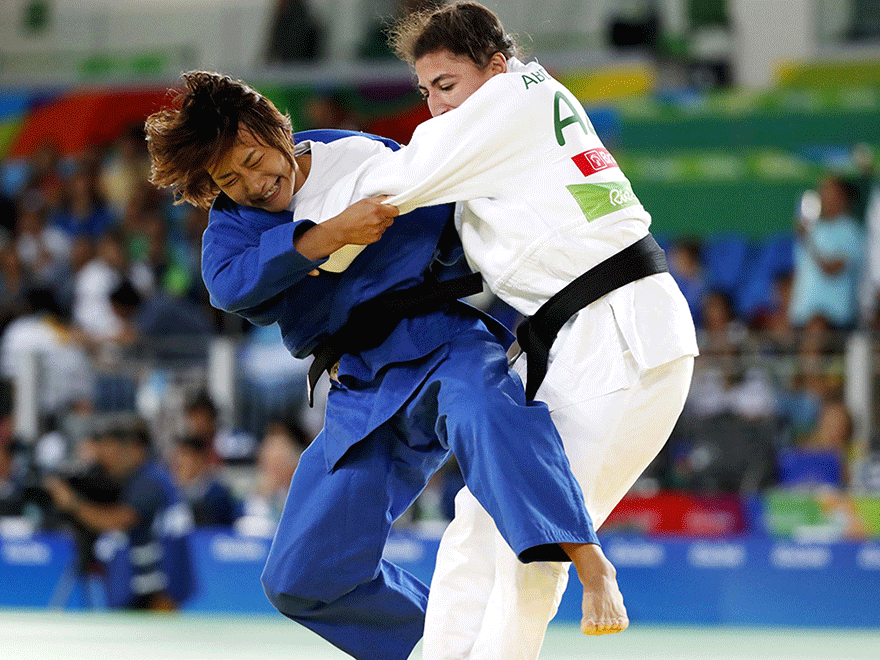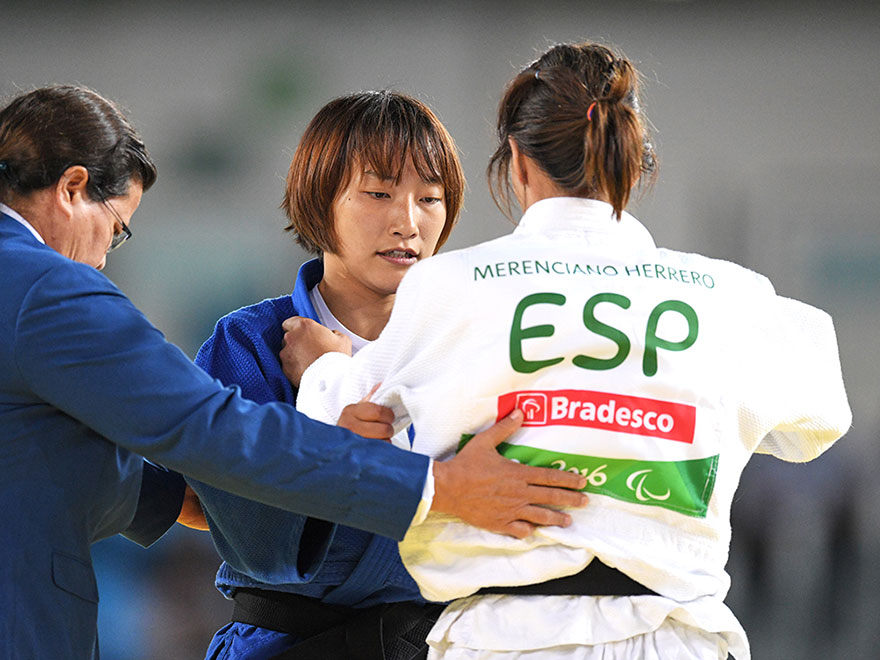niponica is a web magazine that introduces modern Japan to people all over the world.
2019 NO.27
The Olympics Are Coming to Tokyo

Gaining Recognition in Global Sports
Japanese Martial Arts
柔道 Judo

Mukai Shoichiro (left) won the title in the men’s -90kg division at the 2018 Osaka Grand Slam (an international judo competition) in a match against Ushangi Margiani of Georgia. (Photo: Matsuo/Aflo Sports)
Successful evolution to an international sport
Judo is a combat sport born from the ancient Japanese martial art jujutsu. It is composed of a variety of techniques such as nage-waza (throwing techniques) and katame-waza (grappling techniques), and their most prominent feature is the skillful use of the opponent’s strength as a weapon against them.
As a competitive sport, judo is conducted as a match between two athletes on an 8 x 8-meter to 10 x 10-meter mat. A contestant is declared the winner upon achieving a judgement of ippon. Ippon is awarded for a nage-waza that brings the opponent almost entirely flat on their back, or for a katame-waza that pins the opponent down for a determined period of time. When the executed waza is successful but does not fully satisfy the above requirements, the contestant is awarded a judgement of waza-ari. When a contestant achieves waza-ari twice, they are awarded awase waza ippon and are declared the winner. If neither contestant scores an ippon, the number of waza-ari serves to determine the winner by the judges' decision.
Men’s judo became an official Olympic sport at the Olympic Games Tokyo 1964, and women’s judo became an official event at the Olympic Games Barcelona 1992. Today, more than 200 countries and regions are members of the International Judo Federation, and there are strong judo athletes in countries around the world—particularly in France, where the population of registered judo athletes exceeds that of Japan. As judo continues to reach beyond the boundaries of its birthplace, Japan, its interactions with other cultures will undoubtedly lead to unique new styles, which in turn will stimulate judo’s continued development as an international sport.
Para judo for visually challenged athletes
Judo for people with visual challenges has been an official event since the Seoul 1988 Paralympic Games. Just like at the Olympic event, athletes are divided by gender and category, regardless of their level of visual impairment.
Unlike judo, Para judo athletes grip each other and hold still before a match start. Once the match begins, the athletes engage in a full-force battle of techniques, and the one who breaks down the opponent is declared the winner. A major feature of Para judo is the speedy development of the match, which keeps spectators on the edge of their seats.







